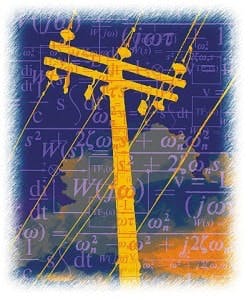Credit: Pacific Northwest National Laboratory
Utilities appear to be increasingly embracing disruptive energy as a business opportunity, rather than opposing it — albeit with some nudging from their regulators.
The trend is particularly pronounced in New York, where this week Consolidated Edison — one of the oldest and largest U.S. utilities — indicated it intends to lead the way.
At the company’s annual shareholders meeting, CEO John McAvoy said “solar, wind, battery storage, fuel cells, electric vehicles, and smart meters are changing lives” and that the utility “won’t just respond to change, we will lead.”
McAvoy statement comes as Con Edison and other New York utilities prepare for the state’s regulatory paradigm shift, Reforming the Energy Vision, which elevates the use of local energy through new markets.
An innovative change advancing in New York is the use of “non-wires alternatives” — local energy and other non-traditional means to ease system overloads instead of conventional transmission and distribution infrastructure. Under order by state regulators, the utilities are finding problem areas on their systems and proposing these non-traditional solutions. In some cases they are asking for the competitive market to come up with ideas.
ConEd has the most highly publicized of these projects in the works for Brooklyn and Queens. The non-wires project will avert the need to build a $1 billion substation and related infrastructure. The utility intends to solve electrical overload problems by fostering development of about $200 million in distributed energy resources.
“In certain Brooklyn and Queens neighborhoods, we’re seeing a boom in residents, jobs, and subway riders. Electric use is growing. Rather than making huge investments, the plan is to meet this growth through energy efficiency, demand management, and distributed generation,” McAvoy said.
The utility also is now looking at non-wires solution for a 4-MW system overload expected in the Plymouth Street area of New York because of growing demand.
Meanwhile, PSEG plans several ‘Utility 2.0’ projects on Long Island that offer non-wires alternative using energy efficiency, customer management of electricity use, and peak load reduction.
PSEG plans to issues several solicitations that will ask competitive companies to offer solutions to reduce pressure on systems in South Fork, Far Rockaway, Glenwood and other areas.
National Grid, which operates Niagara Mohawk, said it may be looking for 6 MW of distributed generation, energy storage or demand response to relieve demand on two substations in central New York, northwest of Syracuse.
Meanwhile, Iberdrola subsidiaries, New York State Electric & Gas and Rochester Gas and Electric, are eying demand response and distributed energy to relieve growth-related overloads expected in parts of upstate New York. And Central Hudson Gas & Electric has proposed several projects including complex microgrids in partnership with NRG Energy.
Con Edison’s McAvoy told shareholders that “savvy consumers” are driving the new business model. “That is why we invest in projects that give them greater choice and control. All the while we seize opportunities to strengthen the grid and grow our business.”
Track news about disruptive energy projects by subscribing to the Energy Efficiency Markets Newsletter. It’s free.







